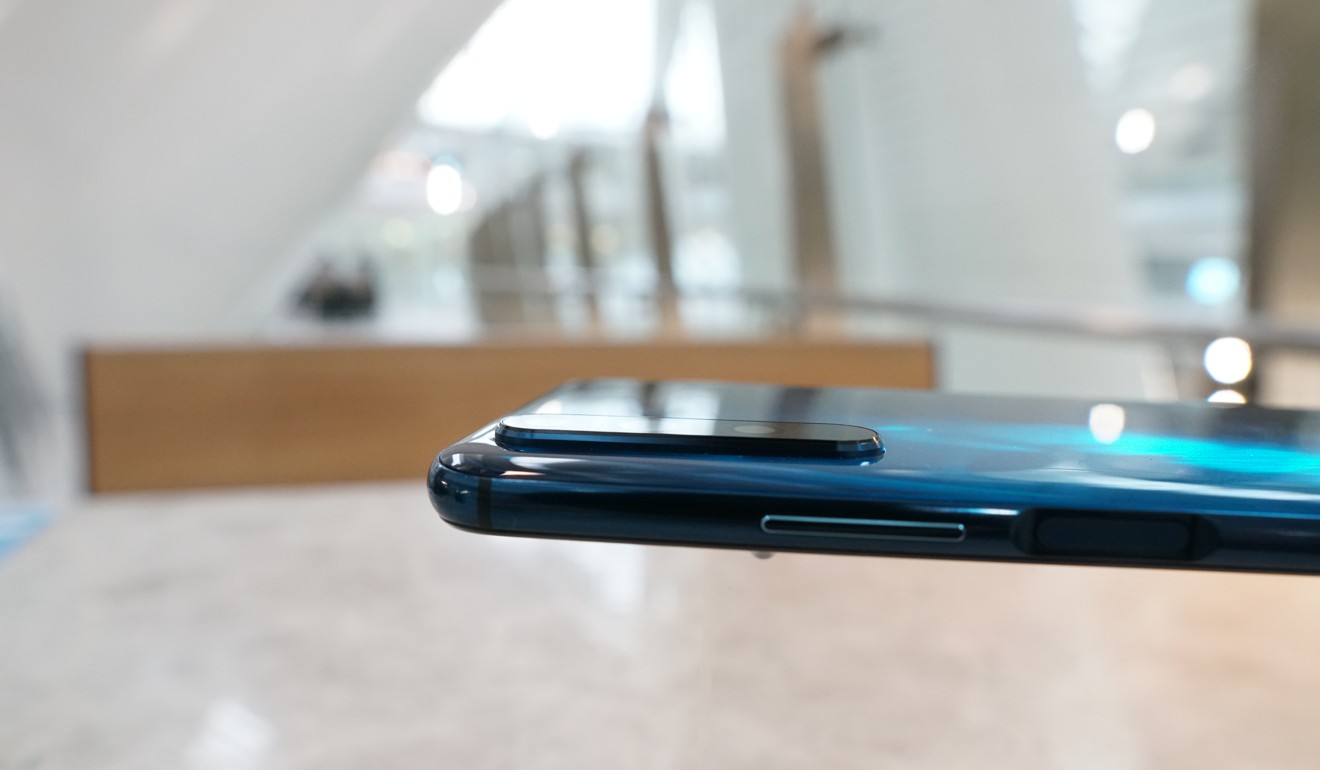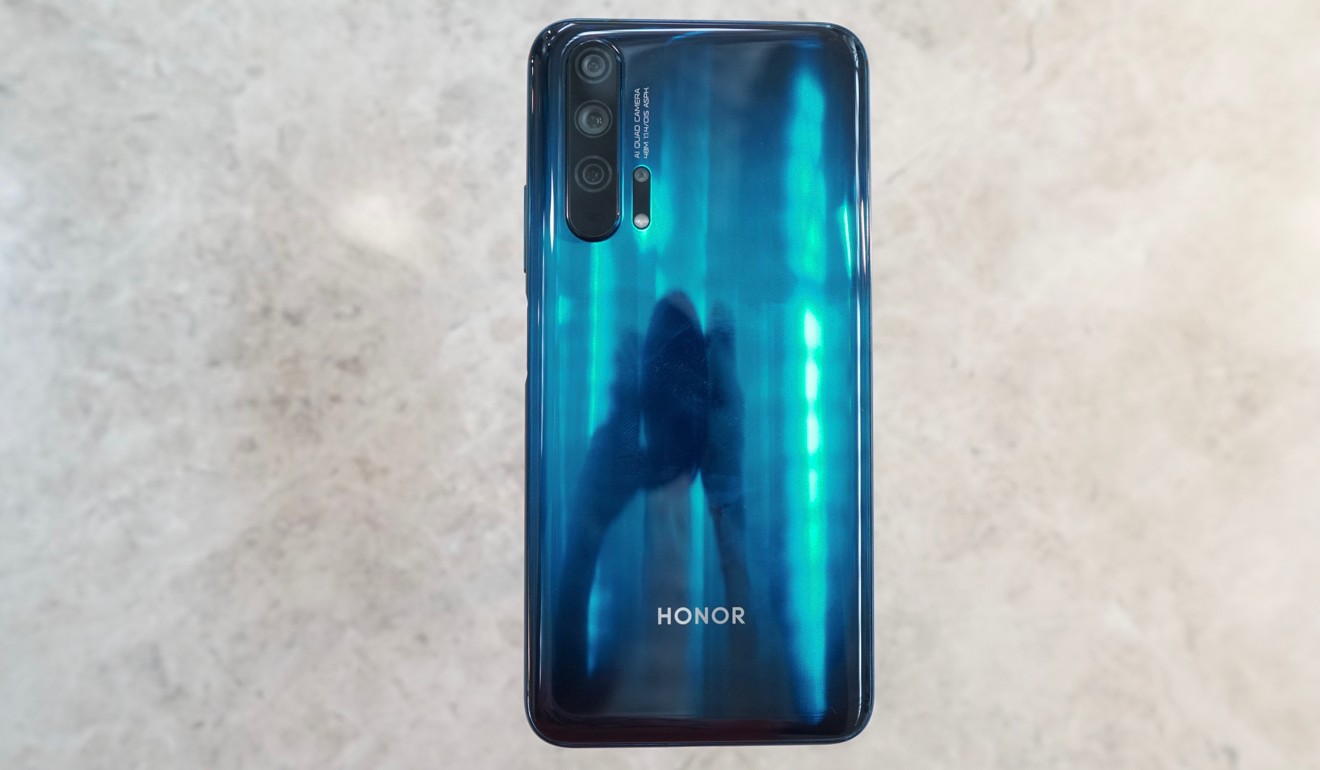
Honor 20 Pro full review: telephoto, wide angle lenses welcome – but should you buy one?
- New handset has a lot in common with the Honor View 20 launched five months ago, and the latter could be a better option unless you need 20 Pro for its camera
- Quite apart from these similarities, if US government’s war on parent Huawei continues and Google won’t service it, don’t buy Honor 20 if you’re outside China

Huawei sub-brand Honor launched its 20 series smartphones two days after Google announced it would suspend business with the Chinese technology giant to comply with a United States government directive, casting a big shadow over its future.
Despite efforts to quell the concerns of consumers, there’s no getting around the fact that, unless the US government stops its all-out assault on Huawei, Honor would be better off shelving its new phone or it will be dead on arrival.
That would be a shame, because there’s quite a bit to like about the Honor 20 Pro, although it is very similar to a model released just five months ago.
The Honor 20 series comprises three devices – something that’s fast becoming the norm for phone brands: the top-tier “Pro” model, an entry-level “Lite”, and a standard device that strikes a happy medium. It’s the Honor 20 Pro that’s being tested in this review.

The Honor 20 Pro has many similarities with the brand’s previous release, the View 20, which went on sale in January. Both phones have the same screen: a 1080-pixel LCD panel with a hole drilled into the upper left corner to house the selfie camera; the same Kirin 980 chipset; and the same 48-megapixel main camera sourced from Sony.
The back is still glass, and there’s a graduated colour-shifting paint job – a trend that’s becoming tiring, and one that Huawei started.

Both devices have similar dimensions: if you’ve held the View 20, you’ll know how the 20 Pro feels in the hand.
So what’s new? The 20 Pro adds an 8-megapixel telephoto lens capable of achieving 3X lossless zoom. This is not as impressive as the “periscope” zoom lens found in Huawei’s premium phone, which can achieve 5X lossless zoom and a very credible 10X zoom too, but it’d be unfair to compare the pricier device to this more affordable handset.
The 20 Pro also boasts a wide-angle camera and a 2-megapixel macro lens. The former is great – wide-angle cameras offer a larger field of vision, which helps with framing and perspective – but the macro lens is hit-and-miss.

The selfie camera, placed within a tiny 4.6mm hole punch, is a 32-megapixel sensor, an improvement on the View 20’s 25-megapixel lens. There’s a side-mounted fingerprint scanner on the right of the device that’s easily reachable with either hand.
The 20 Pro runs on Google’s Android 9 with Huawei’s heavy EMUI skin on top. The latter is at best decent; app icons are garish, and some EMUI features get in the way of how Android operates (for example, pressing two fingers on a screen to pinch often accidentally triggers Huawei’s image recognition overlay). But animations are fluid and the phone doesn’t suffer much from slowdowns.

The Honor 20 Pro’s main 48-megapixel camera, the Sony IMX 586, has been used in no fewer than six phones in the past few months (including the View 20), so differences in performance come down to software image processing.
In general, photos taken by the 20 Pro are sharp and clean, but have the same cold, over-processed vibe Huawei phones generate. I think Honor (and Huawei) phones are great at capturing architecture and scenery, modern skyscrapers and brand new sports cars, but on human subjects the results often appear a bit dry.

The telephoto zoom lens work as advertised; the 3X zoom is crisp, and even the 10X digital zoom looks great. The 20 Pro can even achieve up to 30X digital zoom, which results in grainy but still passable images if capturing something from afar is a priority.
The aforementioned macro lens, when it manages to focus properly, allows for a close-up shot that can impress. But the lens is finicky and, unless you have very sturdy hands, the shot will appear blurry more often than not.
Video capability has been much improved. Videos at 1080p resolution are stable and smooth, and even handheld 4K footage is respectable. This is a big jump from Honor and Huawei devices from 2018. This improvement is probably due to superior software processing and the optical image stabilisation (OIS) built into both the main and telephoto lenses.

Battery life is excellent, as with every Huawei or Honor phone. A full charge lasts an entire day consistently.
It’s hard to draw a conclusion about a phone whose future is so in flux. If Google’s excommunication of Huawei is not resolved soon, then no one outside China should buy this phone, since it will probably lose Android updates and Google app support within a few months.
If, however, the Trump administration’s ban on Huawei is temporary, and business goes back to normal for Huawei, the 20 Pro is a solid purchase for those in the market for a powerful phone that’s more affordable than premium handsets.
US policy aside, from my perspective the Honor 20 Pro comes too soon after the Honor View 20 and their specs are too similar. I’d recommend those interested in the 20 Pro look into the cheaper View 20. The latter lacks a wide-angle camera and can’t zoom as well, but everything else is about equal. Heck, the View 20 even has a headphone jack while the 20 Pro does not.

Dimensions: 154.6 x 74 x 8.4mm
Weight: 182g
Display: 6.3-inch 1,080 x 2,340 OLED panel
Battery: 4,000mAh
OS version reviewed: Android 9 with EMUI on top
Processor: Kirin 980
Main cameras: 48-megapixel f/1.4 sensor, 16-megapixel f/2.2 wide-angle lens, 8-megapixel f/2.4 telephoto lens, 2-megapixel macro camera
Front cameras: 32-megapixel standard lens
Memory: 8GB RAM, 256GB/512GB ROM
Price: starting at €599 (US$668)